
Acrylic paint is a fast-drying paint made of pigment suspended in acrylic polymer emulsion and plasticizers, silicone oils, defoamers, stabilizers, or metal soaps. Most acrylic paints are water-based, but become water-resistant when dry. Depending on how much the paint is diluted with water, or modified with acrylic gels, mediums, or pastes, the finished acrylic painting can resemble a watercolor, a gouache, or an oil painting, or have its own unique characteristics not attainable with other media.

Oil painting is the process of painting with pigments with a medium of drying oil as the binder. It has been the most common technique for artistic painting on wood panel or canvas for several centuries, spreading from Europe to the rest of the world. The advantages of oil for painting images include "greater flexibility, richer and denser colour, the use of layers, and a wider range from light to dark". But the process is slower, especially when one layer of paint needs to be allowed to dry before another is applied.
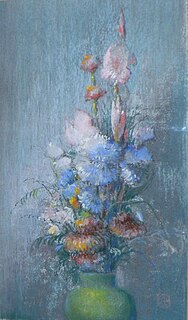
A pastel is an art medium in the form of a stick, consisting of powdered pigment and a binder. The pigments used in pastels are similar to those used to produce some other colored visual arts media, such as oil paints; the binder is of a neutral hue and low saturation. The color effect of pastels is closer to the natural dry pigments than that of any other process. Pastels have been used by artists since the Renaissance, and gained considerable popularity in the 18th century, when a number of notable artists made pastel their primary medium.
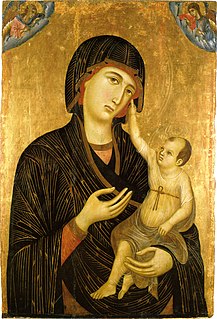
Tempera, also known as egg tempera, is a permanent, fast-drying painting medium consisting of colored pigments mixed with a water-soluble binder medium, usually glutinous material such as egg yolk. Tempera also refers to the paintings done in this medium. Tempera paintings are very long-lasting, and examples from the first century AD still exist. Egg tempera was a primary method of painting until after 1500 when it was superseded by oil painting. A paint consisting of pigment and binder commonly used in the United States as poster paint is also often referred to as "tempera paint", although the binders in this paint are different from traditional tempera paint.

Max Ernst was a German painter, sculptor, printmaker, graphic artist, and poet. A prolific artist, Ernst was a primary pioneer of the Dada movement and Surrealism in Europe. He had no formal artistic training, but his experimental attitude toward the making of art resulted in his invention of frottage—a technique that uses pencil rubbings of textured objects and relief surfaces to create images—and grattage, an analogous technique in which paint is scraped across canvas to reveal the imprints of the objects placed beneath. Ernst is noted for his unconventional drawing methods as well as for creating novels and pamphlets using the method of collages. He served as a soldier for four years during World War I, and this experience left him shocked, traumatised and critical of the modern world. During World War II was designated an "undesirable foreigner" while living in France. He died in Paris on 1 April 1976.

Gouache, body color, or opaque watercolor is a water-medium paint consisting of natural pigment, water, a binding agent, and sometimes additional inert material. Gouache is designed to be opaque. Gouache has a considerable history, having been used for at least twelve centuries. It is used most consistently by commercial artists for posters, illustrations, comics, and other design work.

Watercolor or watercolour, also aquarelle, is a painting method in which the paints are made of pigments suspended in a water-based solution. Watercolor refers to both the medium and the resulting artwork. Aquarelles painted with water-soluble colored ink instead of modern water colors are called aquarellum atramento by experts. However, this term has now tended to pass out of use.
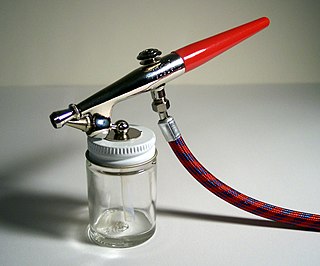
An airbrush is a small, air-operated tool that atomizes and sprays various media, most often paint but also ink and dye, and foundation. Spray painting developed from the airbrush and is considered to employ a type of airbrush.
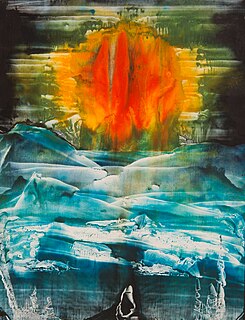
Decalcomania is a decorative technique by which engravings and prints may be transferred to pottery or other materials.
Digital painting is a relatively new but an already established art medium. It’s a medium that typically combines a computer, a graphics tablet, and software of choice. The artist uses painting and drawing techniques with the stylus that comes with the graphics tablet to create 2D paintings within a digital art software. There are multiple techniques and tools that are utilized by digital artists, the first being digital brushes. These come standard with all digital art programs but users can create their own, altering their shape, texture, size, and transfer. Many of these brushes are created to represent traditional styles like oils, acrylics, pastels, charcoal, and airbrushing, but not all. Other effective tools include layers, lasso tools, shapes, and masks. Digital painting has evolved to not just mimic traditional art styles but fully become its own technique.

Body painting is a form of body art where artwork is painted directly onto the human skin. Unlike tattoos and other forms of body art, body painting is temporary, lasting several hours or sometimes up to a few weeks. Body painting that is limited to the face is known as "face painting". Body painting is also referred to as "temporary tattoo". Large scale or full-body painting is more commonly referred to as body painting, while smaller or more detailed work can sometimes be referred to as temporary tattoos.

Emily Kame Kngwarreye was an Aboriginal Australian artist from the Utopia community in the Northern Territory. She is one of the most prominent and successful artists in the history of Australian art.
Frank Tenney Johnson was a painter of the Old American West, and he popularized a style of painting cowboys which became known as "The Johnson Moonlight Technique". Somewhere on the Range is an example of Johnson's moonlight technique. To paint his paintings he used knives, fingers and brushes.
Donna S. Dewberry is an American artist and author who is a member of The Church of Jesus Christ of Latter-day Saints. She developed a "One Stroke" painting technique that will enable anyone to reproduce any effect of nature with one easy-to-learn technique.

Painting is the practice of applying paint, pigment, color or other medium to a solid surface. The medium is commonly applied to the base with a brush, but other implements, such as knives, sponges, and airbrushes, can be used.
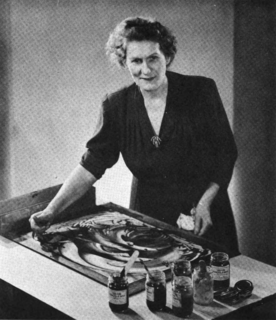
Ruth Faison Shaw (1889–1969) was an American artist, educator who is credited with introducing finger painting into the USA as an art education medium. She developed her techniques while working in Rome, Italy, patenting a safe non-toxic paint in 1931.
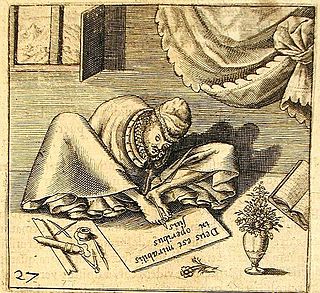
Mouth and foot painting is a technique to create drawings, paintings and other works of art by maneuvering brushes and other tools with the mouth or foot. The technique is mostly used by artists who through illness, accident or congenital disability have no use of their hands. The Association of Mouth and Foot Painting Artists (AMFPA) is a worldwide organization representing these artists.
Dulari Devi is an Indian artist and illustrator, working in the Mithila art tradition. In 2021, she was a recipient of the Padma Shri, a civilian honour granted by the Government of India, for her contributions to art.















